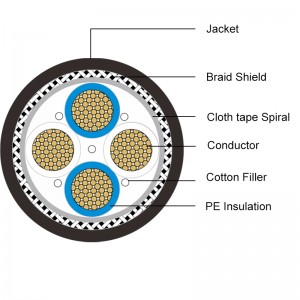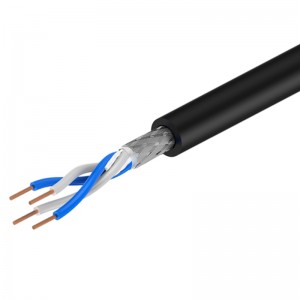Star quad cable is a ideal type of cable used in the field of professional audio and signal transmission. Its distinct characteristics are reflected in its internal structure and performance:

Internal Structure: The star quad cable consists of four conductors arranged in a star-like configuration, the geometric centers of both dual-conductors must be aligned to a common point. This arrangement effectively reduces interference and noise, providing superior signal transmission quality.
Interference Resistance: Due to the paired and crossed arrangement of the four conductors, the star quad cable can mitigate the impact of external electromagnetic interference to a certain extent. This design makes the cable perform exceptionally well in long-distance transmission and high-interference environments, minimizing signal distortion and noise.
Low Crosstalk: The twisted pairing of the four conductors helps to minimize crosstalk, which is the interference between different pairs of twisted wires. This contributes to maintaining signal accuracy and stability.

Signal Fidelity: Star quad cable maintains high signal fidelity in audio and signal transmission, ensuring that transmitted signals faithfully reproduce the original sound or data with reduced distortion.

Flexibility: Despite its more complex internal structure compared to regular cables, star quad cables often retain a high degree of flexibility, facilitating easy installation and wiring.
Application Range: Star quad cables find widespread application in audio, music recording, professional broadcasting equipment, and scenarios requiring high-quality signal transmission, such as radio stations, recording studios, and broadcast facilities.
It's important to note that while star quad cables excel in many aspects, they may not be suitable for all applications. When selecting cables, factors such as specific requirements, environment, and expected transmission distances should still be considered comprehensively.
Post time: Aug-18-2023







